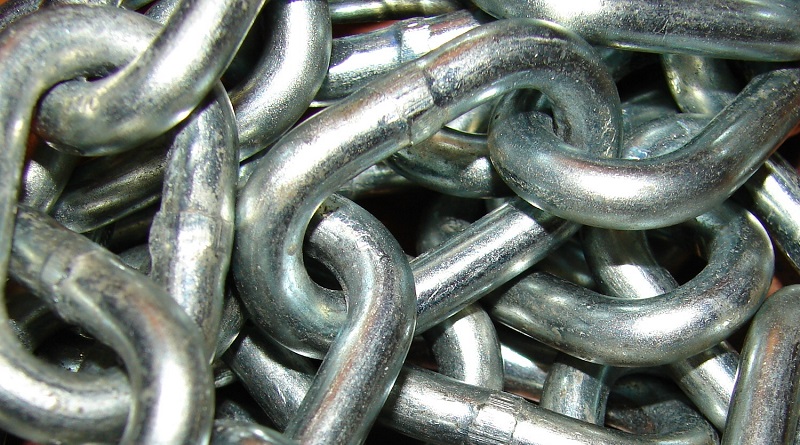Chains, as tools, have been used by humans since blacksmithing became a profession. Chains used to find use in many areas in ancient times, from securing large objects for dragging, chaining slaves and tying up animals, to being used as a weapon. Nowadays, even though their use has been significantly lowered, they are still frequently used in the boat industry for securing the anchor, and in many industrial settings, especially in vehicles such as cranes, which need to be able to safely secure heavy loads.

Industrial chains have three basic characteristics you will need to look for: coil (opening size), diameter (thickness of the chain) and grade (metal tensile strength). Additionally, you also have to take into account the finish of the chain and its corrosion resistance levels.
The grade of the chain, as aforementioned, refers to the tensile strength of the metal it’s made from. A grade number is used by smiths to indicate the utmost breaking strength of the chain. The higher grade a chain has, the greater the break strength. Galvanized chains are a whole different story though. With them, it comes down to how much carbon is in the steel. For example, grade 30 is also known as proof coil and contains less carbon, thus, it’s more commonly used as a duty chain. On the other hand, a grade 40 chain has higher tensile strength as well as higher abrasion resistance features, therefore, comes with a higher price tag.
The diameter of industrial chains can vary, the longer links are a more practical choice in situations where connections must fit the mid chain instead of the end link. With longer links, you can fit shackle bolts anywhere along the length of the chain. Standard coil sizes, on the other hand, may fit only shackles on the end links. Moreover, long links also make the chain much lighter than the standard diameter chains of same length.
And lastly, the proof coil refers to the standard quality regularly stocked by hardware stores and chain manufacturers. The grade 30 chain is proof coil, and the main purpose of that chain is restraining or pulling applications. Proof coil is not for lifting objects overhead, where maximum tensile and maximum impact strength are important. Basic carbon steel metal compositions make it the best option for chain logging and towing. This metal looks different depending on the way it’s finished. Standard finishes are usually bright, plain zinc, colored or hot dip galvanized. The tolerance levels aren’t as tight for inconsistencies in link size and diameter with proof coils and their cost is lower than the cost of other chains.

